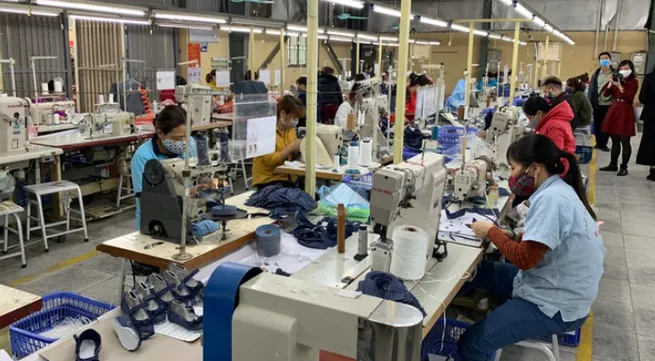Major export industries at a disadvantage amid global economic landscape

Indeed, the majority of businesses forecast that their export revenue for the duration of 2020 will suffer a double-digit reduction due to orders at the end of the year failing to show positive signs of recovery with consumption generally falling as a result of the effects caused by the COVID-19.
According to the Vietnam Leather, Footwear and Handbag Association (Lefaso), the first five months of the year saw exports of bags, wallets, suitcases, and hats and umbrellas reach a mere US$1.3 billion, representing a drop of 15.5% in revenue when compared to the same period from last year, the deepest decline since the pandemic broke out. Similarly, footwear exports reached only US$6.8 billion, a fall of 5%.
Based on the number of signed orders and cancelled ones, Lefaso anticipates a sharp decline ahead in June, with concerns surrounding a number of orders towards the end of the year which have yet to be finalised.
According to Lefaso, the leather & footwear industry has been forced to adjust its export targets for the year, with a reduction of over 10%.
With export turnover for footwear and bags to the United States reaching US$8.2 billion in 2019, the leather and footwear industry anticipates that the highly lucrative market will remain a large consumer of Vietnamese products moving forward. However, the current situation is becoming increasingly more challenging despite this positive outlook.
Upon informing Vietnamese businesses about details of the US footwear market, Matt Priest, President & CEO at Footwear Distributors & Retailers of America, said that the COVID-19 has been the catalyst for a surge in unemployment at a time when the income of American citizens is falling. As a result, consumers in the market have become more cautious when it comes to spending money and purchasing goods, including footwear.
With the demand for footwear within the US market during the reviewed period enduring a fall, it is forecast that the remaining months of the year will see a consistent downward trajectory, making it more difficult for exporters, including those coming from the nation, Priest noted.
With regard to other sectors, seafood exports are also predicted to witness an annual decline due to the global spread of the virus. The Vietnam Association of Seafood Exporters and Producers (VASEP) outlined that 2019 saw many fishery products such as shrimp, catfish, and octopus endure a drop in value, of which, the country’s shrimp exports reached US$ 3.38 billion, down close to 5% on-year.
Overall, the reviewed period saw seafood exports hit US$2.8 billion, an annual fall of 10.3%. Most notably, one of the major disadvantages for the industry is that major consumption markets such as the EU has seen demand decrease sharply. This has been a major factor resulting in the nation’s exports to the EU falling to US$12.9 billion, a decline of 12% in comparison to the corresponding period last year.
In the face of the current global market situation, Nguyen Hoai Nam, VASEP Deputy General Secretary, said the industry is making every effort to match the strong performance achieved in 2019.
Despite totaling approximately US$40 billion in export turnover last year, the textile and apparel industry has also suffered a sharp decline in value, with the sector only bringing in US$10.4 billion during the reviewed period, a drop of 14.5% on-year.
With the European Union-Vietnam Free Trade Agreement (EVFTA) set to become effective from August, there is hope on both sides that the trade deal can act as a driving force for boosting exports of many industries until the end of the year.
Despite this, with the epidemic weakening both the US and EU economies, businesses are not expecting a demand to increase exports in the remaining months of the year with sectors such as garments and textiles, footwear, along with agriculture and fisheries facing hurdles to stimulate exports to the EU due to low demand throughout the region.
Elsewhere, the country’s imports and exports largely depend on the purchasing power of the global market. In addition to exports to the EU decreasing by 12%, Vietnamese exports to the ASEAN and Korean markets during the reviewed period reached US$9.4 billion, down 13.4%, and US$ 7.7 billion, down 0.5%, respectively.
In the face of reduced purchasing on a global scale in the short term, the long term is expected to see the EVFTA allow domestic goods to gain entry into the EU market as they will enjoy a competitive advantage following the removal of tariffs. Furthermore, the goods of rival suppliers that compete with the nation within the EU market, such as China, have yet to reach a similar trade agreement with the bloc and are therefore at a disadvantage.
VOV





